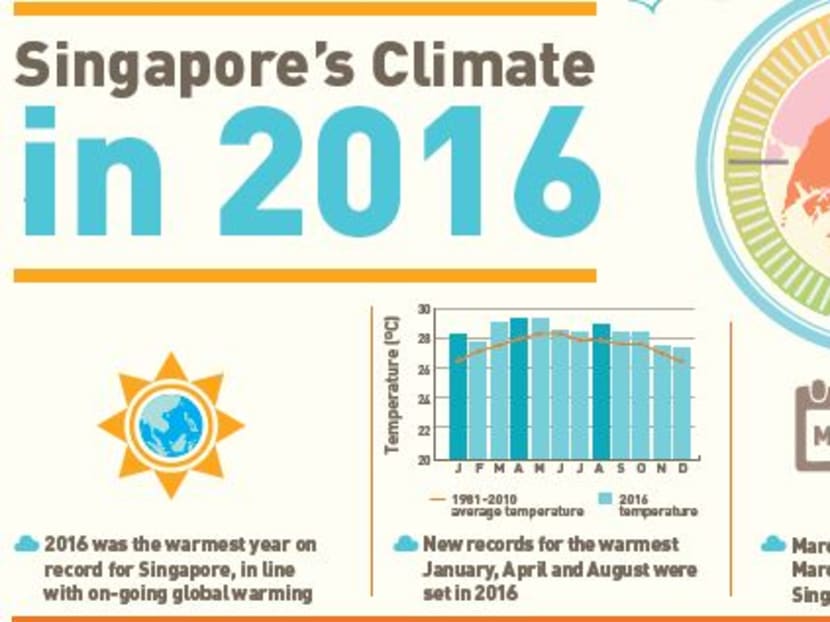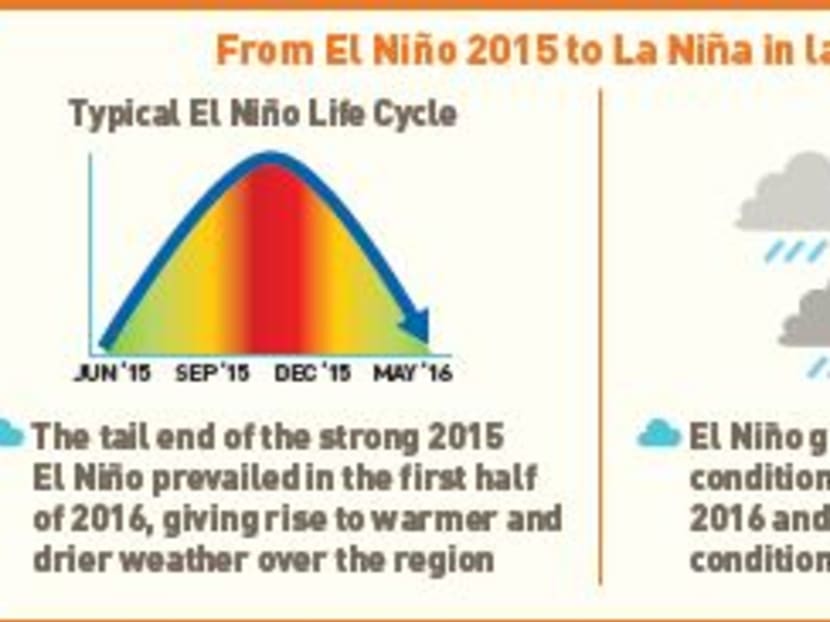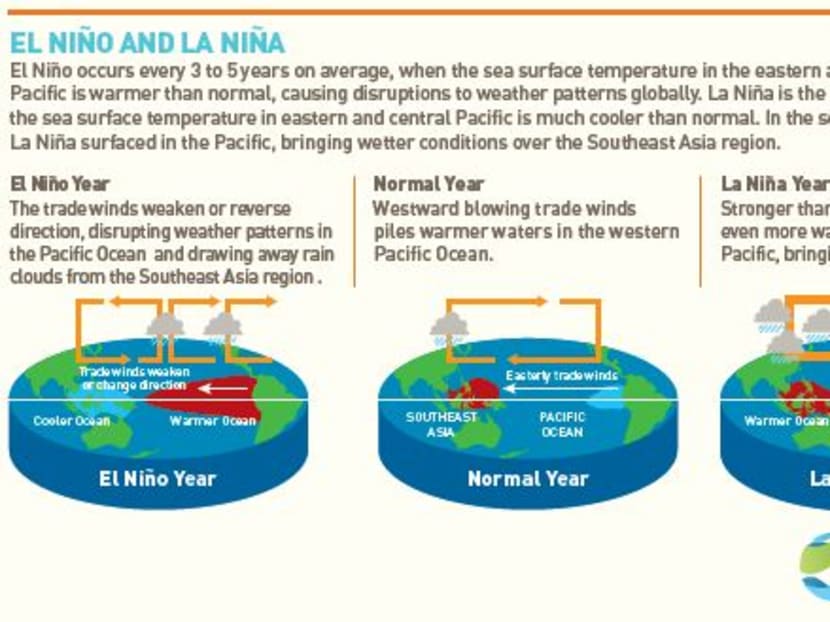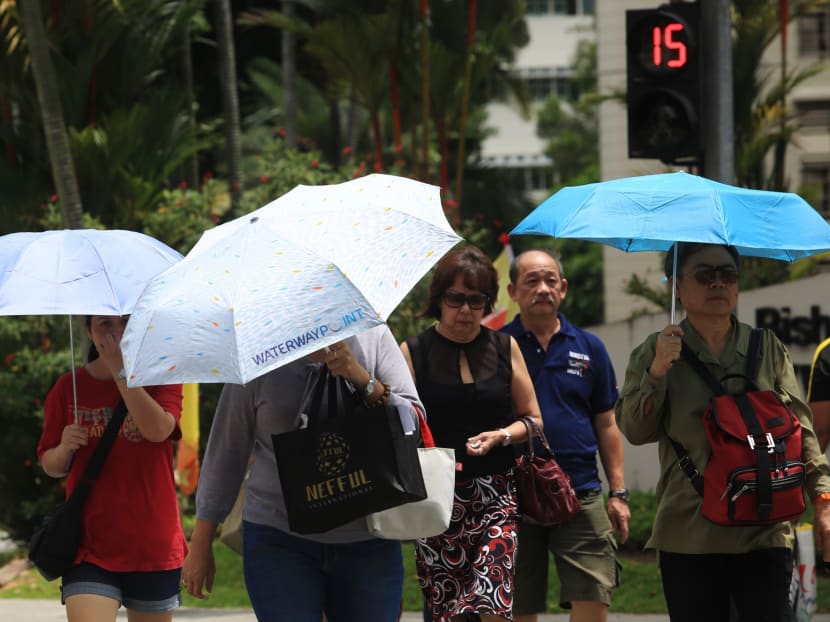2016 hottest year in Singapore, overall rainfall less than normal
SINGAPORE — Singapore experienced its hottest year on record last year as rainfall fell slightly below normal levels, the Meteorological Service Singapore (MSS) said in a report released on Thursday (March 23).
SINGAPORE — Singapore experienced its hottest year on record last year as rainfall fell slightly below normal levels, the Meteorological Service Singapore (MSS) said in a report released on Thursday (March 23).
The annual mean temperature of 28.4°C last year was higher than the climatological average of 27.5°C (taken over the 1981-2010 base period). This breaks the previous joint record of 28.3°C set in 2015, 1998 and 1997.
As for annual rainfall, overall, the 1,956mm recorded last year measured below the climatological average of 2,166mm.
Last December, the MSS already gave an early indication that 2016 would be the hottest year since temperature records were collected in 1929.
Temperatures soared in the first half of last year due to the effects of a very strong El Nino phenomenon, giving rise to warmer and drier weather conditions in the South-east Asia region. El Nino gave way to La Nina in the second half of the year, resulting in wetter conditions.
New monthly records were also set last year, with January (28.3°C), April (29.4°C) and August (28.9°C) being the warmest months. The month of May was the second warmest May since May 1998, while December was the second warmest December after December 2015.
Last year also saw the driest March ever in Singapore, with a monthly rainfall total of 6.2mm recorded at Changi climate station.
However, the western parts of the island experienced well above normal rainfall in June and July, with the year’s highest monthly rainfall (434.4mm) recorded in July over Jurong.



In its Annual Climate Assessment Report 2016, the MSS also said that a relatively wet start of the South-west Monsoon was part of the reason why there were fewer and less severe occurrences of transboundary haze affecting the region last year compared to the year before.
“Singapore was affected by only one significant episode from 26 to 28 August 2016 when haze from fires in central Sumatra was blown in by the prevailing westerly winds. The 24-hr Pollutant Standards Index reached a high of 143 (in the unhealthy range) at 8am on 27 August 2016, before gradually returning to normal levels in the late afternoon on 28 August 2016,” the report said.
The MSS also pointed out that eight of Singapore’s 10 warmest years happened in the 21st century. All the 10 warmest years have occurred since 1997, consistent with ongoing global warming.
Worldwide, last year was also the warmest year on record, as recently confirmed by the World Meteorological Organisation, the MSS said.
The release of the report by the MSS is in conjunction with the World Meteorological Day, which is observed yearly on March 23.
EL NINO AND LA NINA
El Nino occurs every three to five years on average, when the sea surface tempareture in the eastern and central tropical Pacific Ocean is warmer than normal, causing disruptions to weather patterns globally. La Nina is the reverse of El Nino, when the sea surface temperature in the same parts of the Pacific is much cooler than normal.







